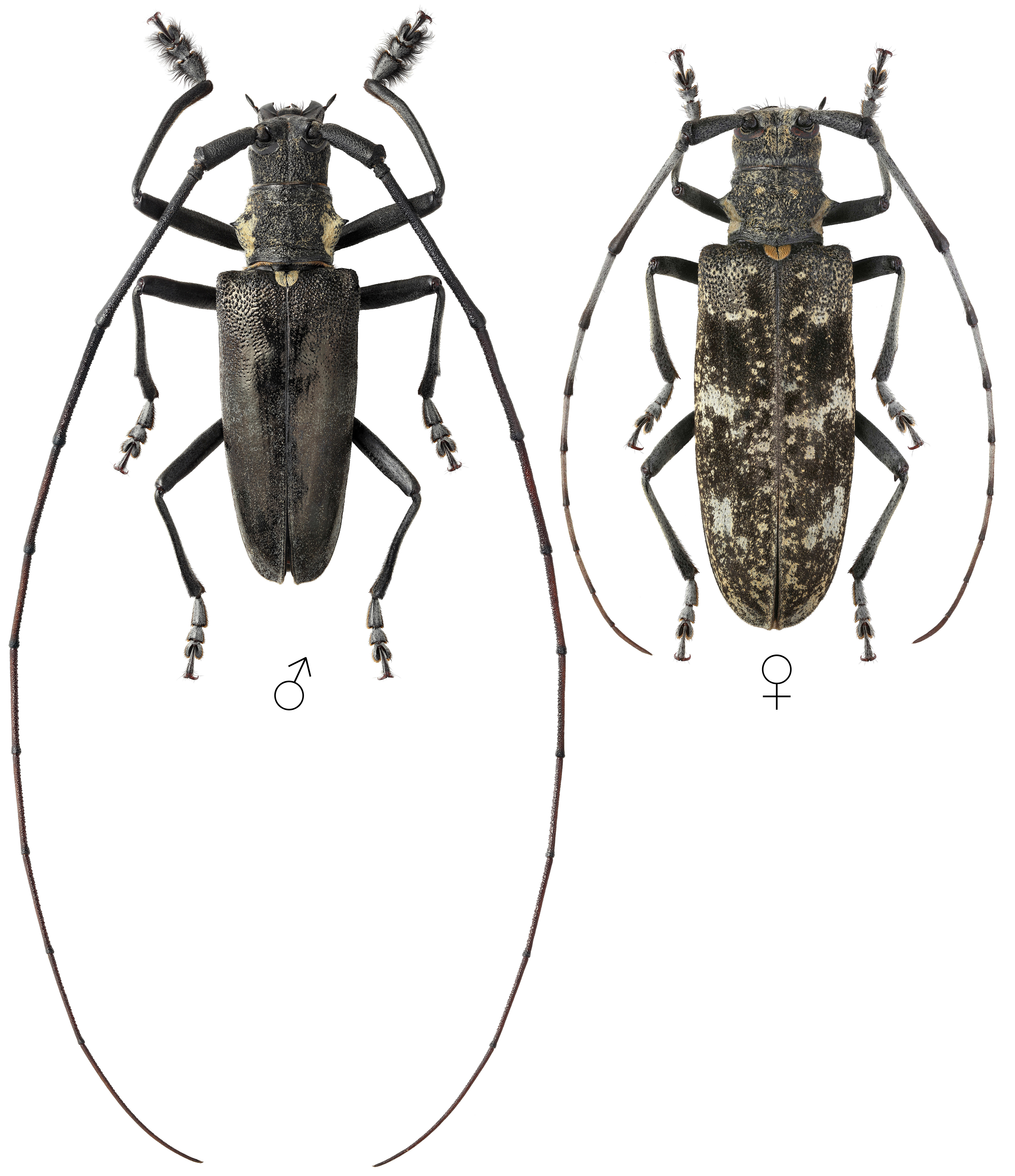Subfamilia: LAMIINAE / Tribus: MONOCHAMINI

[Photo © Kirill V. Makarov, click on the picture for 4K resolution]
Monochamus grandis, the biggest Palaearctic Monochamus species distributed in Japan and Kuril Islands (Russian Far East), has been described from Japan by Charles Owen Waterhouse in 1881 [▿].
M. grandis larvae develop in trunks of dying or freshly dead/felled/uprooted coniferous trees (Abies, Picea, Tsuga, in Russian far East it is known only from Abies sachalinensis). Youg larvae feed subcortically, after the first overwintering enter and bore gallery in the wood, where also after the second overwintering create pupal cells and pupate. Life cycle 2 years, adults are active from June to September [✧].
Body length: 26 - 49 mm Life cycle: 2 years Adults in: June - September Host plant: polyphagous in coniferous trees (Abies, Picea, Tsuga) Distribution: Kunashir Island (Kuril Islands, Russian Far East) and Japan
The depicted mounted beetles were collected in Kurils Nature Reserve (Kunashir/Кунаши́р island, Kuril Islands, Yuzhno-Kurilsky district, Sakhalin region, Russia) in: ♂ (40 mm) - the Ozernaya (Озерная) river valley (N43°52′26″ E145°28′56″) on August 26, 2009 and ♀ (30 mm) - the coast of the Sea of Okhotsk south of Znamenka (Знаменка) cap (N43°56′12″ E145°33′15″) on August 31, 2011.Collected by A. Zaitsev
[▿]
Waterhouse Ch.O.:
Descriptions of new Longicorn Coleoptera from India, Japan, and Africa.
The Transactions of the Entomological Society of London (3): 427-432, 1881. [download]
[✧]
Cherepanov A.I.:
Cerambycidae of Northern Asia, Volume 3 - Laminae Part I.
Amerind Publishing, New Delhi: 300pp [pages 133-140], 1990. [download]
| Subfamilia | Lamiinae Latreille, 1825 |
| Tribus | Monochamini Gistel, 1848 |
| Genus | Monochamus Dejean, 1821 |
| Subgenus | Monochamus Dejean, 1821 |
| Species | Monochamus (Monochamus) grandis Waterhouse, 1881 |
